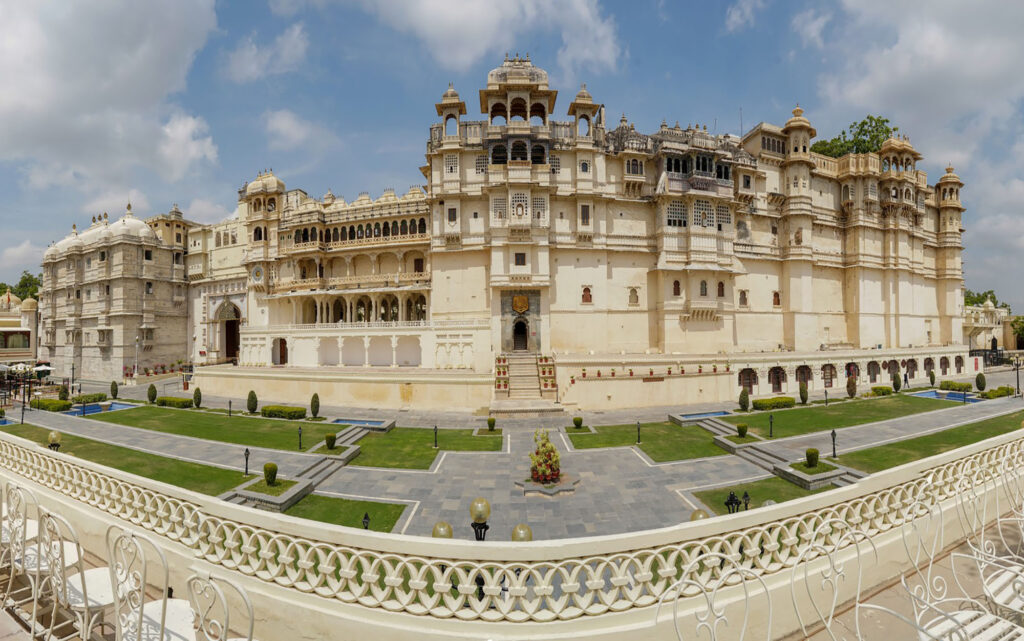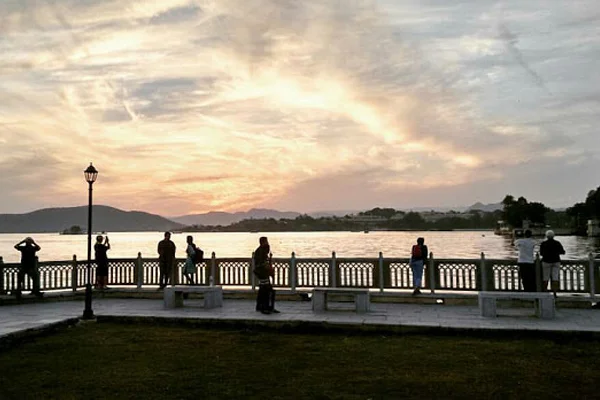Udaipur, often hailed as the “City of Lakes” and the “Venice of the East,” is a treasure trove of architectural wonders, cultural heritage, and natural beauty. As you embark on a journey through this enchanting city, let’s unravel its top ten places, each woven with fascinating facts and captivating anecdotes that bring Udaipur’s rich tapestry to life.
1. City Palace

The majestic City Palace stands as a testament to the grandeur of Mewar’s rulers, with its construction spanning over four centuries. The palace complex encompasses a series of palaces, courtyards, and gardens, showcasing a blend of Rajput, Mughal, European, and Chinese architectural styles.
Legend has it that Maharana Udai Singh II, the founder of Udaipur, was guided by a sage to establish the city on the banks of Lake Pichola after finding a favorable spot while hunting. The City Palace served as the seat of power for the Mewar dynasty, witnessing tales of valor, intrigue, and royal splendor.
2. Lake Pichola

Created in the 14th century, Lake Pichola is one of the oldest and largest lakes in Udaipur. It spans an area of approximately 4 square kilometers and is surrounded by iconic landmarks such as the City Palace, Jag Mandir, and the Lake Palace.
The ethereal beauty of Lake Pichola has inspired artists, poets, and filmmakers for centuries. It famously served as a backdrop for James Bond’s rendezvous in the film “Octopussy,” adding to its allure as a symbol of romance and exoticism.
3. Jagdish Temple

Built in 1651 by Maharana Jagat Singh, the Jagdish Temple is a splendid example of Indo-Aryan architecture. Dedicated to Lord Vishnu, the temple features intricate carvings, beautifully sculpted pillars, and a towering spire that rises majestically above the city skyline.
According to local folklore, Maharana Jagat Singh commissioned the temple to seek divine intervention for the well-being of his kingdom. The temple’s sanctum is adorned with an idol of Lord Vishnu intricately carved from a single block of black stone, believed to possess mystical powers.
4. Saheliyon ki Bari

Saheliyon ki Bari, or the “Garden of the Maidens,” is a serene oasis adorned with lush greenery, marble fountains, and intricately designed pavilions. It was built in the 18th century by Maharana Sangram Singh as a recreational retreat for the royal ladies of the court.
As the name suggests, Saheliyon ki Bari was designed as a place of leisure and companionship for the female attendants of the royal household. It is said that the garden’s fountains were designed to create a cooling effect during the scorching summers, providing respite to the maidens from the heat.
5. Taj Lake Palace

Nestled amidst the tranquil waters of Lake Pichola, the Taj Lake Palace is a symbol of luxury and refinement. Originally built as a royal summer palace in the 18th century, it was later transformed into a world-class heritage hotel by the Taj Group of Hotels.
The Taj Lake Palace has hosted numerous dignitaries, celebrities, and heads of state over the years. It is said that Queen Elizabeth II of England was enchanted by the palace’s exquisite beauty during her visit, declaring it as the most romantic hotel in the world.
6. Bagore ki Haveli

Bagore ki Haveli is a meticulously restored mansion that offers a glimpse into the opulent lifestyle of Udaipur’s aristocracy. Built in the 18th century by the Prime Minister of Mewar, it now serves as a museum showcasing a rich collection of artifacts, including royal costumes, antique furnishings, and traditional Rajasthani crafts.
The haveli is renowned for its evening cultural performances, where artists showcase traditional Rajasthani music, dance, and puppetry against the backdrop of its ornate courtyards and balconies. Visitors are transported back in time to an era of regal splendor and artistic excellence.
7. Sajjangarh Monsoon Palace

Perched atop the Aravalli Hills, the Sajjangarh Monsoon Palace offers panoramic views of Udaipur’s scenic landscapes. Built in the late 19th century by Maharana Sajjan Singh, it was intended to serve as a summer retreat and observatory to track the arrival of monsoon clouds.
Maharana Sajjan Singh was a visionary ruler who was deeply concerned about water conservation and agricultural prosperity in his kingdom. The Monsoon Palace was constructed not only as a royal retreat but also as a strategic vantage point to monitor rainfall patterns and manage water resources effectively.
8. Fateh Sagar Lake

Named after Maharana Fateh Singh of Udaipur, Fateh Sagar Lake is a scenic artificial lake that comprises three interconnected islands. It is a popular spot for boating, picnics, and leisurely walks along the promenade, offering breathtaking views of the surrounding hills and landscapes.
Fateh Sagar Lake has undergone several expansions and renovations over the years to augment its water storage capacity and enhance its recreational facilities. It remains a beloved destination for locals and tourists alike, especially during the annual Mewar Festival when the lake comes alive with cultural festivities and boat processions.
9. Ambrai Ghat

Ambrai Ghat is a picturesque waterfront promenade located along the eastern banks of Lake Pichola. It offers uninterrupted views of the City Palace, Jag Mandir, and the iconic Lake Palace, making it a popular spot for photography enthusiasts and nature lovers.
The ghat is named after Ambrai, a revered deity worshipped by the local community for centuries. It is believed that taking a dip in the sacred waters of Ambrai Ghat during auspicious occasions brings blessings and spiritual purification, fostering a deep sense of reverence among devotees and visitors alike.
10. Jag Mandir

Situated on an island in Lake Pichola, Jag Mandir is a stunning palace complex that dates back to the 17th century. It served as a refuge for royalty during times of political upheaval and is renowned for its marble architecture, landscaped gardens, and ornate pavilions.
Jag Mandir has a rich history intertwined with tales of valor and romance. It is said that Emperor Shah Jahan, while in exile, drew inspiration from the palace’s design elements for the construction of the iconic Taj Mahal in Agra, showcasing the enduring influence of Udaipur’s architectural legacy on Mughal aesthetics.
11. Karni Mata Temple

Perched atop Machla Magra Hill, Karni Mata Temple is a revered Hindu shrine dedicated to Karni Mata, the deity believed to protect the city of Udaipur. Visitors can ascend the hill via a cable car ride and marvel at the temple’s architecture, panoramic views, and spiritual significance.
Udaipur’s top places offer a captivating blend of history, culture, and natural beauty, each infused with fascinating facts and anecdotes that narrate the city’s illustrious past and enduring charm. Whether exploring ancient temples, strolling along tranquil.
